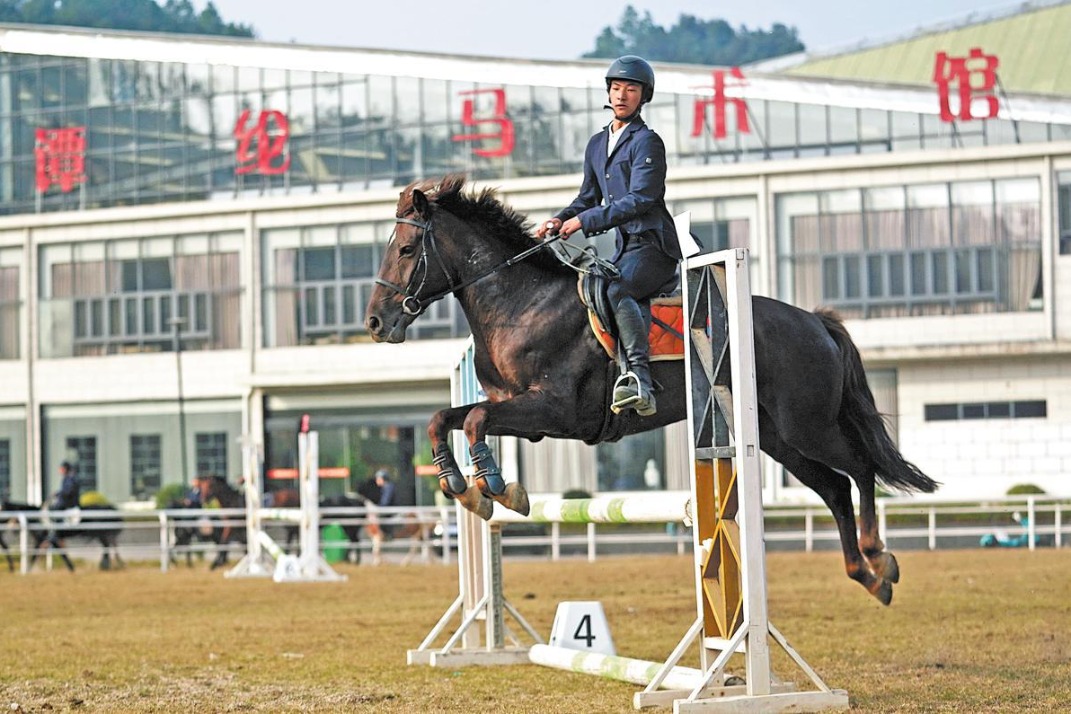Mural duty


When these reproductions were finally put on display, the combination of their smooth outlines and rich palette, predominated by large areas of red and green, were hailed as a revival of the majestic splendor of Tang-era art.
His work on the Dunhuang murals had a profound influence on Zhang's other paintings, which most notably saw him use the motif of court ladies as a key recurring theme in his work.
Before Zhang visited Dunhuang, he inherited the continued approach of the Ming and Qing dynasties that highlighted a woman's slender body curves and frail gestures. But in the grottoes, he was arrested by the healthy and vigorous beauty of the female Buddhist believers and fairies depicted in the murals.
Zhang embraced the style: The court ladies under his brush no longer looked sickly but instead took on a demeanor of grace and dignity.
These developments are easy to spot at the ongoing exhibition when comparing Zhang's figure painting works from before the time of the Dunhuang reproductions with the works he created after.
























